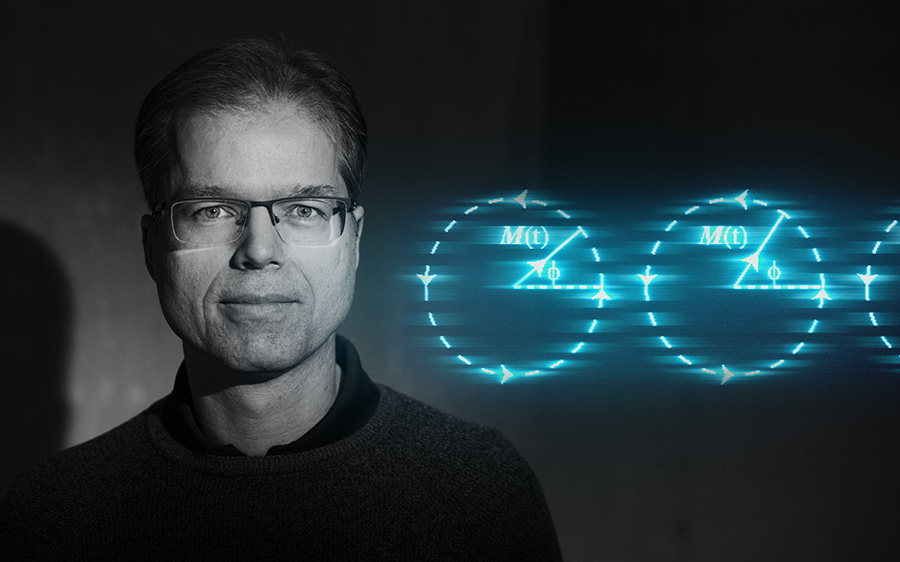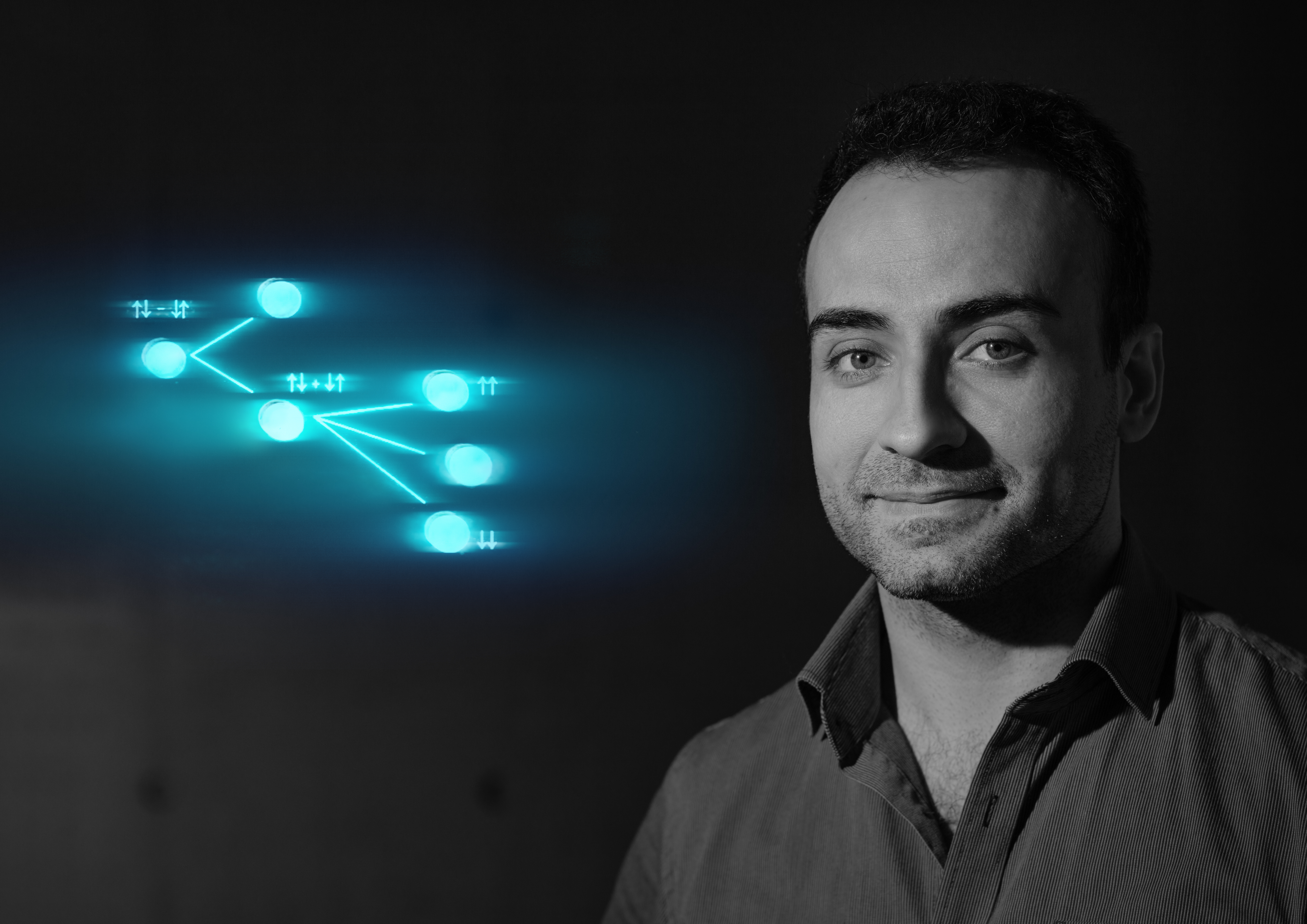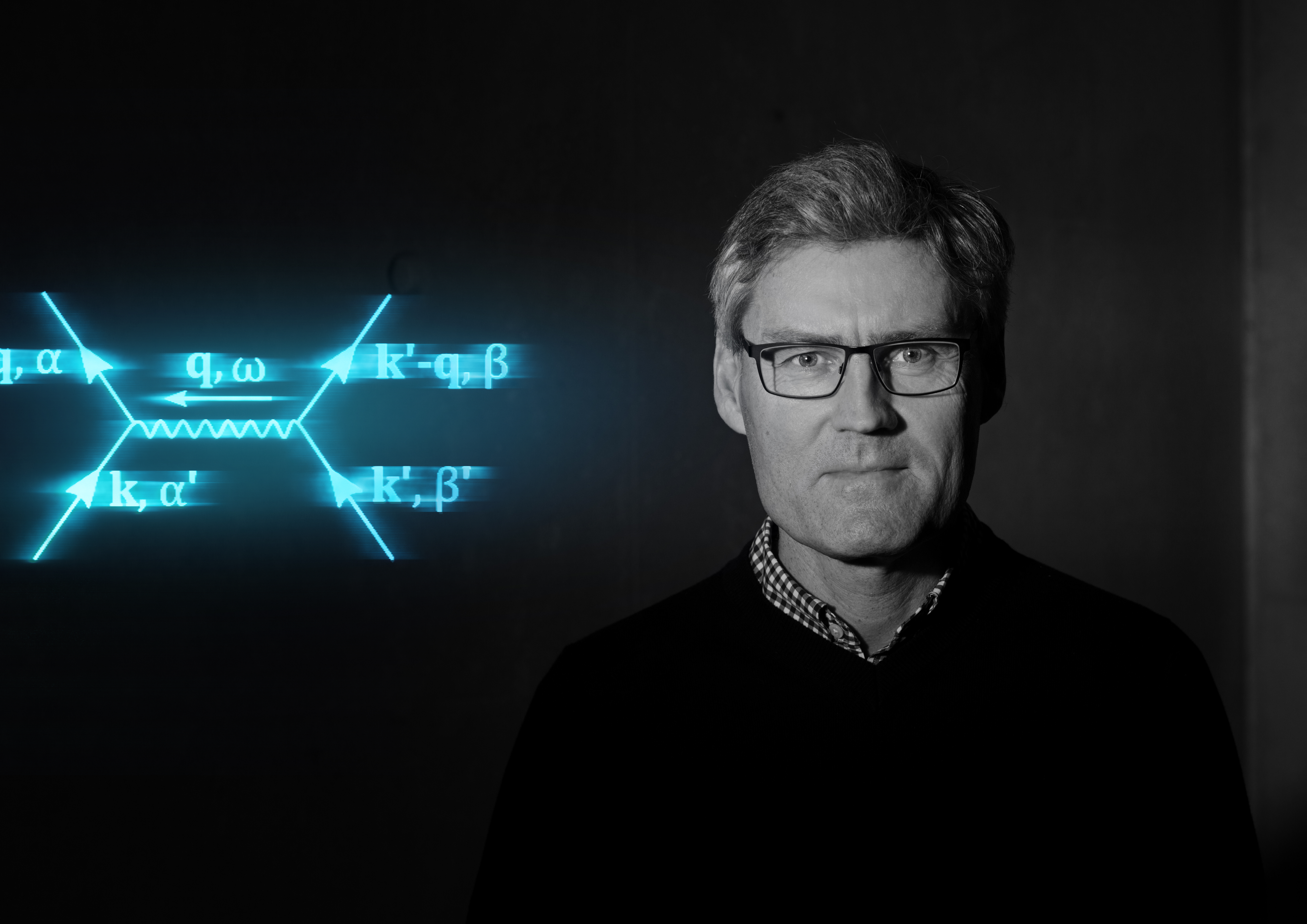Research by our Primary Investigators - Center for Quantum Spintronics (QuSpin)
Research by our Primary Investigators
Spin Insulatronics

Theme and goal
An electron has a spin as well as a charge. Conventional electronics and spintronics are based on the motion of mobile electrons in conductors. Spintronics, the utilization of spin in electronic devices, has revolutionized datastorage and enabled Apple’s iconic devices iPod, iPhone, and iPad.
Spin Insulatronics is profoundly different because there are no moving charges that generate heat. In magnetic insulators, spin information can, nevertheless, propagate.
Controlling electric signals through the deployment of magnetic insulators can facilitate a revolution in information and communication technologies. We aim to determine to what extent spin in antiferromagnetic and ferromagnetic insulators couple to charge currents in adjacent conductors. We will utilize this coupling to control electric signals.
Since spin signals in insulators have extremely low power dissipation, overcoming the limitations can enable low- power technologies such as oscillators, logic devices, non-volatile random-access memories, interconnects, and perhaps even quantum information processing.
Key questions
We focus on the fundamental challenges facing Spin Insulatronics. Key questions are how spin can transfer from electrical conductors to insulators, how far and how spin propagates in insulators, and how much power these devices consume.
For current activities, see QuSpin Annual Report 2023.
Topological Quantum Matter
Theme and goal
Superfluidity and superconductivity are the spectacular phenomena that fluids in the quantum regime may flow without any dissipation. Magnetism is the effect that an astronomical number of tiny magnetic dipoles of electronic, atomic, or molecular origin spontaneously organize themselves in an ordered state.Superconductivity, superfluidity, and magnetism are co-operative phenomena where enormous numbers of degrees of freedom spontaneously self-organize themselves into various ordered states of matter. This involves transitioning from one state of matter into another state of matter, so-called phase transitions.
Topology is a branch of mathematics that investigates global geometric properties of objects. These objects could be physical objects which we could hold in our hand, but also much more abstract objects defined in an abstract space of mathematical functions. In recent years, physics has seen a sharp rise of interest in topological matter and topological phasetransitions.
Topological matter is a term denoting quantum system featuring extremely robust and very useful physical properties which are protected by some deep non-trivial topological properties of the energy spectrum of the system, i.e. a global property of the “geometry” of the energy spectrum. Topological phase transitions are phase transition where the ordered state cannot be characterized by a standard simple local order parameter (like the magnetization of a magnet).
Rather, the ordered state has a lack of topological defects (think of the hole in a doughnut compared to the lack of a hole in an orange), while the disordered states has proliferated large amounts of topological defects “ripping” the ordered state apart” (think of punching a large number of holes in an orange).
We are interested in the interplay between topological matter and various collective effects and broken symmetries such as superfluidity, superconductivity, magnetism, magnons (quantized magnetic fluctuations), phonons (quantized lattice vibrations), and photons (quanta of light). Could their interplay lead to novel and unexpected robust phenomena? Does the interplay lead to novel topological phase transitions? Can different types of topological order and different types of topological defects compete? Tangential to this, could such robust novel phenomena, were they do exist, also lead to interesting quantum-technological applications?
Key Questions
The overarching goal of our research is to understand how collective effects in quantum systems with topologically protected physical properties, both with and without strong correlation effects, conspire to produce novel and emergent physics. Such effects are of interest from a fundamental physics point of view, and the research is likely to shed light on other areas of physics as well, such as high-energy physics and high-temperature superconductivity. Systems that we study with this in mind are heterostructures of topological insulators and magnetic insulators, topological insulators, and superconductors, and chiral p-wave superconductors, to mention some.
For current activities , see QuSpin Annual Report 2023.
Superconducting Spintronics

Theme and goal
In classical physics, matter exists in one of four different states: gas, liquid, solid, or plasma. However, this classification is too crude to capture the wealth of fascinating physics that emerges within each of these states. For instance, not all solid states behave in the same way.
According to the quantum mechanical description of physics, various solid materials will behave in very different ways. Some materials are magnetic, some do not conduct currents of electric charge, while others can carry currents of not only charge but also a quantum property known as spin. This property is closely related to magnetism and is a fundamental trait of most elementary particles.
It turns out that some materials can conduct electric currents without any energy loss: so-called superconductors.The origin of superconductivity is quantum mechanical, but that does not mean superconductivity only occurs at microscopic length scales invisible to the naked eye. Large chunks of materials can be superconducting, making this phenomenon a macroscopic manifestation of quantum physics. Magnetism is another example of a phenomenon which originates from quantumphysics. When materials such as superconductors and magnets, having very different properties, are combined, things get interesting. This is one of the core motivations behind the field of superconducting spintronics where one studies precisely what happens when magnets are placed in close proximity to superconductors.
We have two main goals guide our research: Firstly, the most important goal is to discover new quantum mechanical phenomena that emerge when combining superconductors with other materials that have fundamentally different properties. A particular emphasis is on spin-dependent quantum effects that arise when magnetic materials are placed in contact with superconductors. Secondly, we focus on discovering specific phenomena that may be relevant to the development of memory technology and information transfer based on superconductors. This is closely related to how transport of charge, spin, and heat occurs in materials.
We use a variety of analytical and numerical tools to address the research questions above, depending on which method is the most appropriate for a particular research project. Some of our theoretical approaches include lattice models, quasiclassical Keldysh theory, Green function techniques, scattering theory, and Landau-Lifshitz-Gilbert phenomenology.
Key questions
The main challenges that we are attempting to solve are related to the functional properties of materials and how they can be controlled or altered by combining different materials.For instance, is it possible to use magnetic materials to control when superconductivity appears and even enhance its properties? Can one use superconductors to generate, control, and detect transport of not only charge but also other quantum degrees of freedom such as spin, without any energy loss? Finally, we are interested in understanding how superconductivity is manifested in unusual solid-state systems, such as atomically thin materials.
For current activities, see QuSpin Annual Report 2023.
Spectroscopy of Quantum Materials

Theme and goal
The recent decades have seen the rise of modern information and communication technologies, largely based on the use of semiconductors in transistors and integrated electronic circuits. This era is sometimes referred to as the "silicon age“, highlighting the importance of the material silicon in this context. The properties of silicon are well understood on fundamental grounds. However, there are classes of materials whose physical behaviour is vastly more complex and less understood, including superconductors, magnets, and topological systems. In these "quantum materials“ the quantum-mechanical nature of the electrons and their mutual interactions come to the forefront and remain manifest over a wider range of energy and length scales. Researchers envision that proper control of these quantum effects and resolving some of their puzzles could enable new technologies beyond the silicon age. Understanding the physics of quantum materials is challenging, however, and involves the development and application of sophisticated experimental and theoretical techniques. We use a method called spin- and angle-resolved photoelectron spectroscopy (spin-ARPES) to investigate magnetic and topological materials. Spin-ARPES is based on the photoelectric effect, i.e. the excitation of photoelectrons at a material surface upon irradiation with monochromatic light. The effect has long been known and constitutes one of the key observations that paved the way from classical electrodynamics to quantum mechanics. Use of modern spectrometers and light sources allows us to study the spatial, angular and spin distributions of photoemitted electrons as well as their dependence on energy and polarization of the exciting light, providing detailed information about electronic and magnetic properties. With this, our goal is to contribute to the discovery and to a refined microscopic understanding of quantum states in new and complex materials.
Key questions
Our primary focus lies on the investigation of electronic states with so-called topological properties which give rise to unusual spin textures in momentum space. We are interested in how topological properties and spin textures are related to or modified by ferromagnetic or antiferromagnetic order, specific crystalline symmetries, quantum confinement in atomically thin crystals andsproximity coupling in heterostructures. Spin-ARPES allowsus to directly address these points experimentally. In thescoming year, we are planning to upgrade the spin-ARPESs setup in our laboratory with a UV laser light source tos enable higher resolution and count rates as well as new contrast mechanisms, such as dichroism. We perform complementary experiments at international synchrotron radiation facilities and collaborating laboratories.
For current activities, see QuSpin Annual Report 2023.

